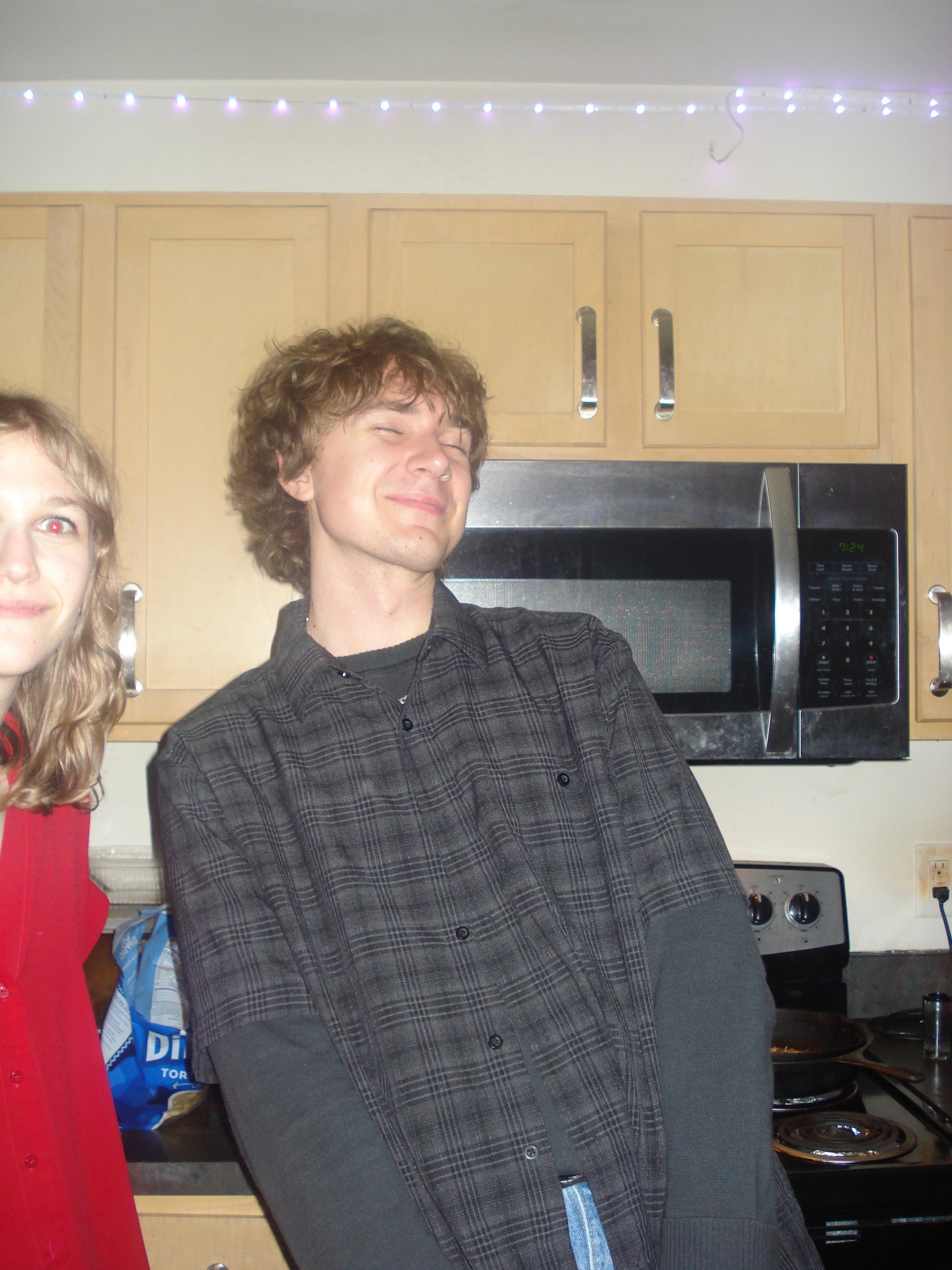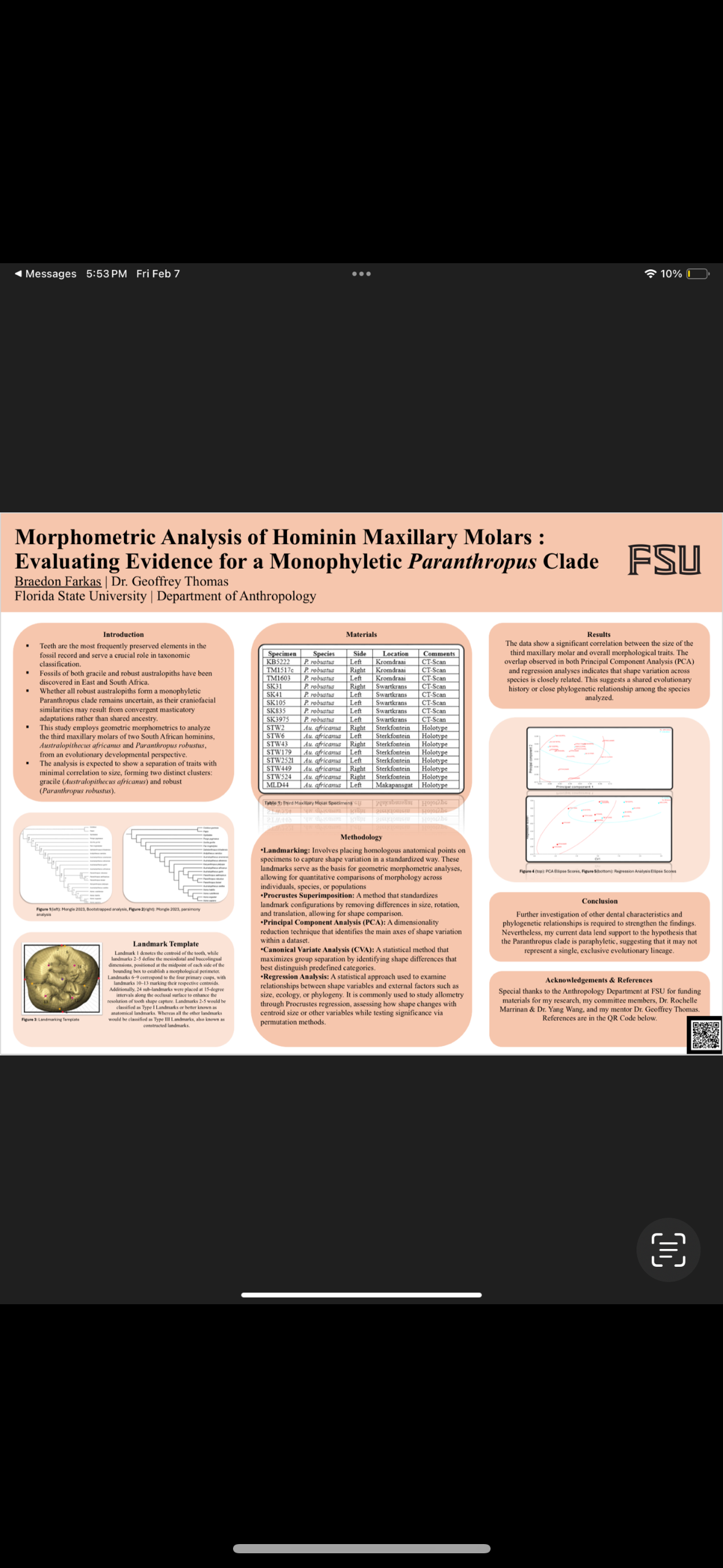Research Symposium
25th annual Undergraduate Research Symposium, April 1, 2025
Braedon Farkas Poster Session 1: 9:30 am - 10:30 am/ Poster #270

BIO
My name is Braedon and I am an anthropology and history double major. I am passionate about our evolutionary history! I will be starting my MS in Human Paleobiology at George Washington in the fall. For fun, I enjoy hanging out with my friends, the outdoors, reading, and cooking.
Morphometric Analysis of Hominin Maxillary Molars: Evaluating Evidence for a Monophyletic Paranthropus Clade
Authors: Braedon Farkas, Dr. Geoffrey ThomasStudent Major: Anthropology and History
Mentor: Dr. Geoffrey Thomas
Mentor's Department: Anthropology Mentor's College: College of Arts & Sciences Co-Presenters:
Abstract
Evaluating the Evolutionary Development of Paranthropus: A Dental Ontogeny and Allometric Scaling Approach
The evolutionary origins of the genus Paranthropus remain debated, particularly whether it evolved monophyletically from a common ancestor or arose through convergent evolution. This study examines the role of post-canine dentition in Paranthropus evolution by evaluating the third maxillary molar of Australopithecus africanus and Paranthropus robustus. Using dental ontogeny and allometric scaling, I analyzed molar size and development to assess evolutionary relationships. My findings indicate significant morphological overlap between the two species, suggesting a possible evolutionary continuum rather than distinct, independently derived lineages. Additionally, environmental factors influencing dental morphology were considered, particularly in relation to dietary adaptations in Pleistocene ecosystems. Given Paranthropus’s reliance on heavy mastication, understanding third molar growth patterns provides insight into adaptive responses to ecological pressures. These results contribute to the broader discussion of Paranthropus evolution, challenging strict dichotomies between monophyly and polyphyly and refining our understanding of hominin diversity. By integrating paleoecological and morphological data, this research offers new perspectives on the adaptive and evolutionary forces shaping early hominins.
Keywords: Anthropology, Evolutionary History, Paleoanthropology, Dentition


